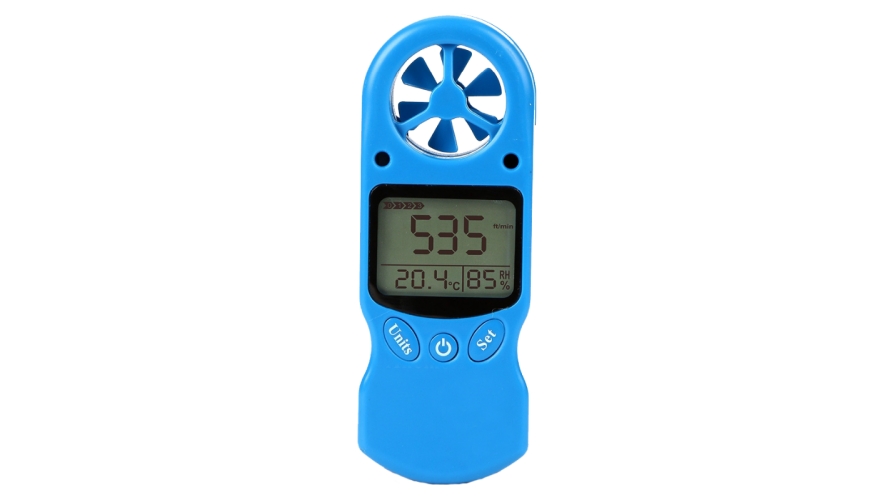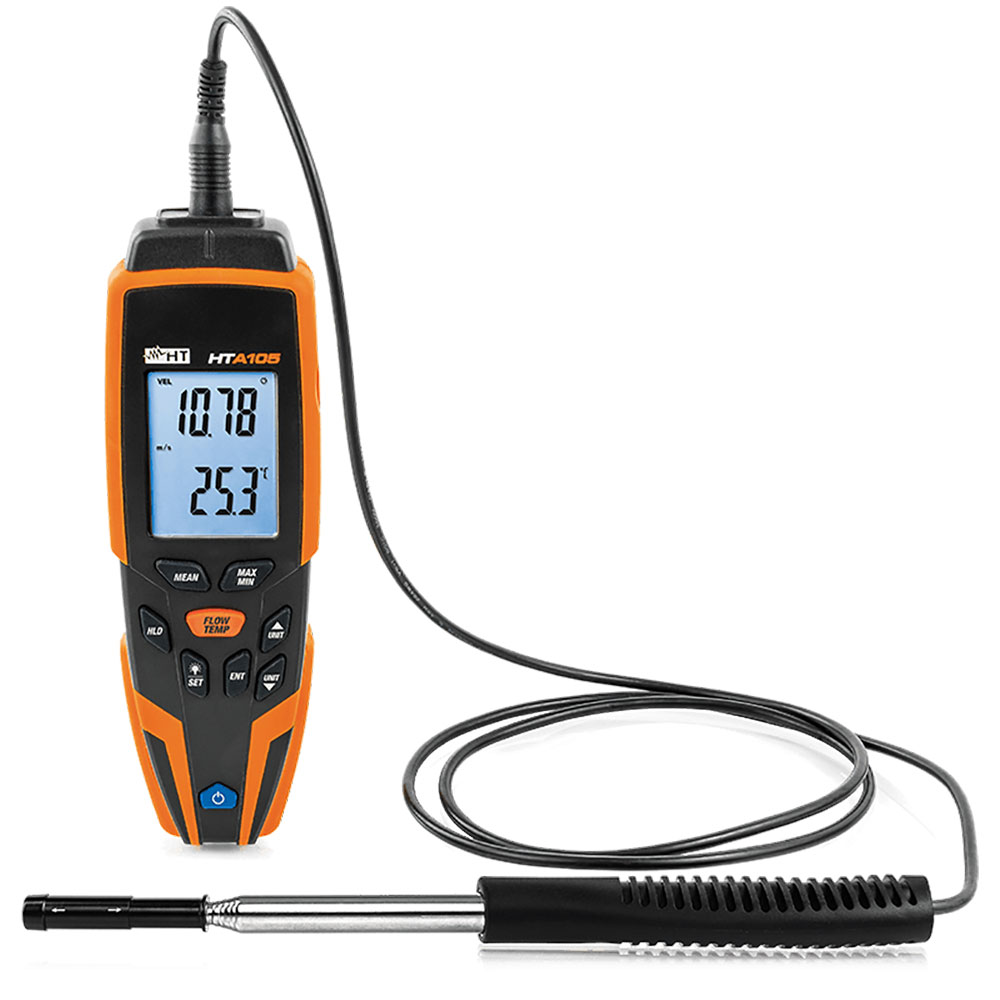All You Required to Learn About Anemometers: Just How They Work, Why They Issue, and Where to Utilize Them
Anemometers, though commonly neglected in the world of scientific tools, play a vital role in numerous fields, using important understandings into wind rate and airflow patterns. Comprehending the technicians behind these gadgets is essential for any person seeking to harness the power of this data. From meteorologists tracking climate patterns to designers creating structures with wind lots in mind, the applications of anemometers are far-reaching and diverse. As we look into the intricacies of anemometer modern technology, we will uncover the inner functions of these tools, their significance, and the essential factors to consider when selecting the best anemometer for details applications.

Anemometer Basics
A vital instrument used to gauge wind rate and direction, the anemometer plays an essential role in weather forecasting and numerous markets. An anemometer usually consists of three or 4 cups that turn in the wind, a vane that points right into the wind, and sensing units to track the turnings or motions. By determining the rotations or activities over a details time duration, the anemometer can identify wind speed. The vane aids figure out wind direction by aiming into the wind, providing beneficial data for weather forecasting, air travel, maritime operations, ecological surveillance, and wind energy applications.
There are various types of anemometers available, consisting of mug anemometers, vane anemometers, hot-wire anemometers, and sonic anemometers, each with its special attributes and applications. Cup anemometers are commonly utilized for fundamental wind rate dimensions, while vane anemometers are liked for directional dimensions.
Principles of Anemometer Operation
Building on the fundamental understanding of anemometer fundamentals, the concepts of anemometer procedure illuminate the technicians behind wind rate and direction dimensions. Anemometers operate the principle of air flow impacting a sensor, triggering it to revolve. Cup anemometers, as an example, have 3 or even more cups that record the wind, creating them to rotate much faster as the wind speed rises. The rotation rate is then transformed right into a wind speed dimension. Vane anemometers, on the various other hand, utilize a tail or a probe that straightens itself with the wind instructions, giving a measurement of wind instructions based upon the orientation of the sensing unit. Hot-wire anemometers count on a warmed cable that cools off as wind passes over it, with the rate of cooling identifying the wind speed. Ultrasonic anemometers measure wind rate and instructions by examining the moment it takes for ultrasonic signals to travel in between transducers. Recognizing these principles is critical for exact and trusted wind dimensions in different applications.
Significance of Anemometers
The relevance of anemometers in meteorology and various sectors can not be overstated. Anemometers play an essential duty in determining wind rate and direction, giving necessary data for weather condition forecasting, environment studies, environmental surveillance, and air travel procedures. Meteorologists rely on anemometers to collect accurate wind data, aiding them understand weather condition patterns, predict tornados, and concern timely cautions to the general public. In industries such as building and construction, agriculture, renewable resource, and maritime procedures, anemometers are made use of to optimize processes, make certain safety, and raise efficiency. For example, wind farm drivers make use of anemometers to read this article assess wind problems and take full advantage of electricity production from wind turbines. In the maritime industry, anemometers help ship navigating by offering real-time wind info to captains, assisting them make notified choices to make certain secure trips. Overall, anemometers are important tools that contribute substantially to safety and security, performance, and educated decision-making in weather forecasting and a vast array of industries.
Applications Across Numerous Industries
Applications of anemometers cover across varied industries, showcasing their versatility and energy beyond weather forecasting. In the renewable resource sector, anemometers play a critical function in evaluating wind problems for wind farm positionings, guaranteeing optimum energy production. Industries like construction and mining use anemometers to keep track of wind rates, essential for safety and security procedures, specifically when operating at elevations or in open-pit mines where strong winds can present risks. Anemometers are additionally essential in the aeronautics industry, helping pilots in recognizing airspeed and wind direction for risk-free liftoffs and landings. The maritime industry advantages from anemometers for ship navigation, helping seafarers prepare for weather modifications and readjust routes appropriately. In farming, anemometers aid farmers in managing crop splashing by giving real-time data on wind rate to stay clear of drift. Additionally, anemometers discover applications in cooling and heating systems to optimize air flow and improve power performance in buildings. The varied usage situations of anemometers highlight their importance across different markets, highlighting their crucial role in enhancing operational safety and efficiency (anemometer).

Choosing the Right Anemometer for Your Requirements
Choosing the proper anemometer tailored to your specific needs is necessary for getting exact wind speed and instructions dimensions. When picking an anemometer, take into consideration factors such as the designated application, needed dimension variety, ecological problems, and wanted attributes. For basic objectives, a mug anemometer is suitable for measuring wind speed, while a vane anemometer gives wind instructions information. Hot-wire anemometers are suitable for low airspeed dimensions, and ultrasonic anemometers offer high precision and resilience.

Verdict
To conclude, anemometers play an important role in gauging wind speed and direction throughout various sectors. Comprehending the principles of anemometer procedure is vital for selecting the ideal device for specific demands. From meteorology to aeronautics, anemometers are important tools for accumulating accurate information and guaranteeing safety and security in different applications. It is vital to think about the significance of anemometers in order to make educated choices when selecting one of the most suitable gadget for measuring wind conditions.
There are various types of anemometers offered, consisting of mug anemometers, vane anemometers, hot-wire anemometers, and sonic anemometers, each with its distinct functions and applications. Mug anemometers are generally utilized for standard wind speed measurements, while vane anemometers are liked for directional dimensions. Hot-wire anemometers are ideal for reduced airspeeds, and sonic anemometers are perfect for high-precision measurements in research study and industrial settings.Building on the foundational understanding of anemometer fundamentals, the concepts of anemometer operation illuminate the auto mechanics behind wind rate and direction measurements. For general functions, a cup anemometer is appropriate for determining wind speed, while a vane anemometer offers wind direction data.